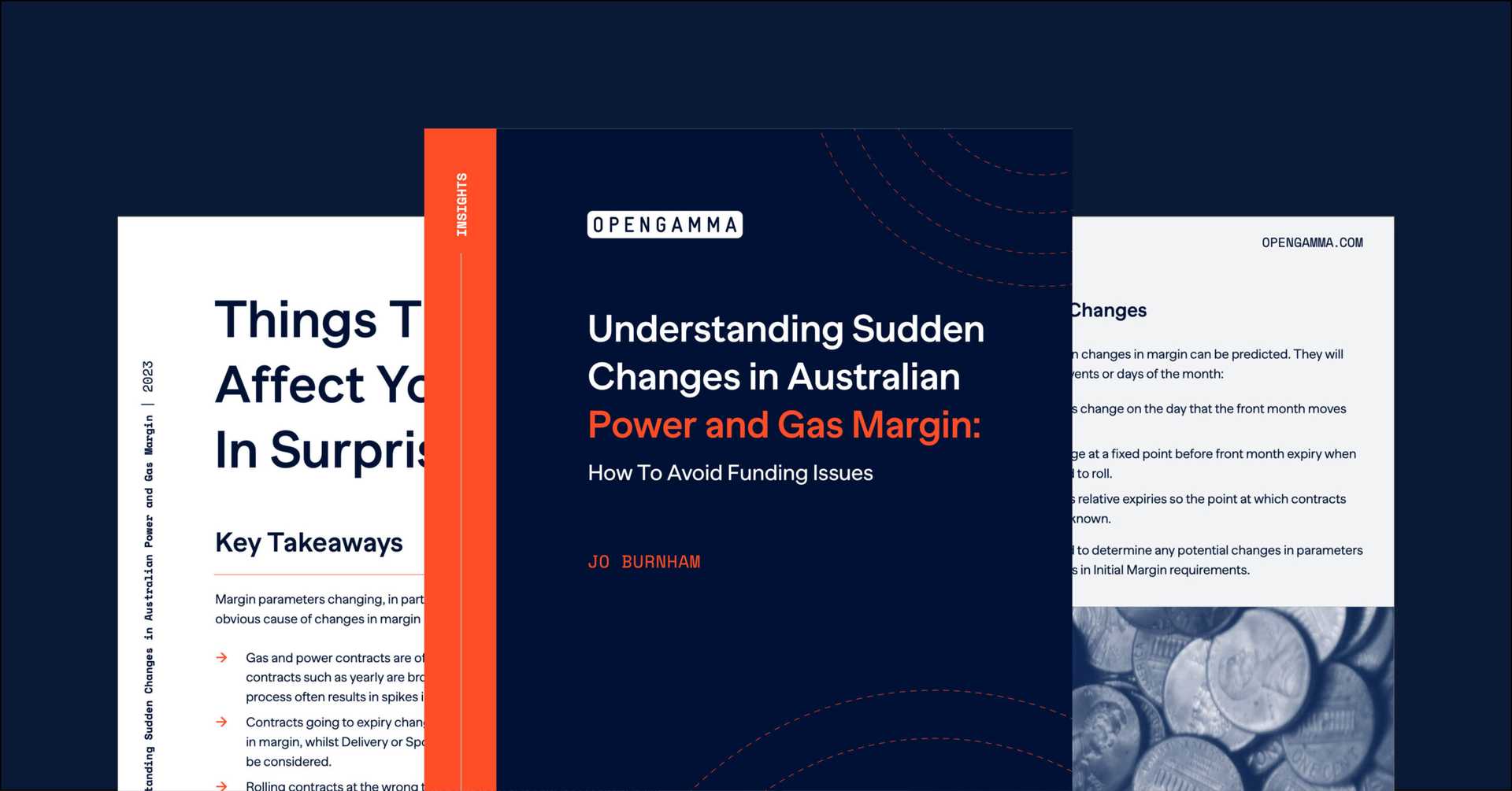There are two types of power derivatives traded in the Australian market and cleared via ASX Clear:
- Standard peak and base load futures and options on four regional markets – New South Wales, Queensland, Victoria and South Australia. These are similar to the derivatives traded on other markets around the world.
- A $300 cap future that is priced like a strip of options and used to manage exposure to spikes in the spot electricity market price. These specific contracts for the Australian market.
Although these are based on the same underlyings, they are very different products with very different risk profiles. And this is reflected in the way that margin is calculated.
What Is The Difference?
Margin on both sets of contracts is calculated using SPAN. But it is the way that the SPAN parameters, in particular the scanning ranges, are defined that is different.
- For the standard contracts scanning range is defined as a percentage of value.
- For the $300 cap contracts scanning range is defined as an absolute value.
Both methods of defining these parameters are used by other CCPs. ECC (who clear for EEX on the European power and gas markets) defines the margin rate as a percentage, whereas ICE defines the rate as an absolute value for the similar products that they clear.
Why The Difference?
Standard contracts, whether peak or base, are subject to the full range of possible prices. They can be extremely volatile, especially when impacted by external factors such as weather events.
This potential for large variations in prices from high to low can be best served by margin rates defined as a percentage of value. If prices rise then the margin requirements will rise too, ensuring that sufficient margin is called. But equally, as prices fall the margin will fall too. This prevents some of the issues seen in other markets where, as prices fell, the margin requirements became a very high percentage of contract value.
However, the cap contracts have completely different characteristics. Any price under $300 is ignored when setting the settlement price so this will remove all the volatility exhibited in this price range. For any prices above $300, the amount by which they exceed the cap level will be averaged by the total number of prices. The combination of only taking the excess and averaging will result in a much lower variation in prices compared to the standard contracts.
These features of the pricing of the cap contract mean that an absolute margin rate is more suitable. There is less chance that margin will fail to keep up with prices, and traders can be more certain of requirements before they trade.
What You Need To Consider
Whilst the margin on cap products will be consistent, the margin on other contracts changes on a daily basis. Therefore, it is a good idea to have in place processes that help you to monitor margin levels.
Similarly, any offsets provided in SPAN between base contracts and cap contracts could change unpredictably so you need to keep an eye on them too. Being able to understand the components of the margin that are driving the requirements needs tools that can explain how the calculation is broken down and which positions are making the largest contribution.
Where margin levels can change, it is also a good idea to have tools in place that help you to forecast future funding requirements, maybe including stress testing and fixed price shocks. The ability to project margin over shorter time horizons to prevent any unexpected liquidity issues also becomes key.




